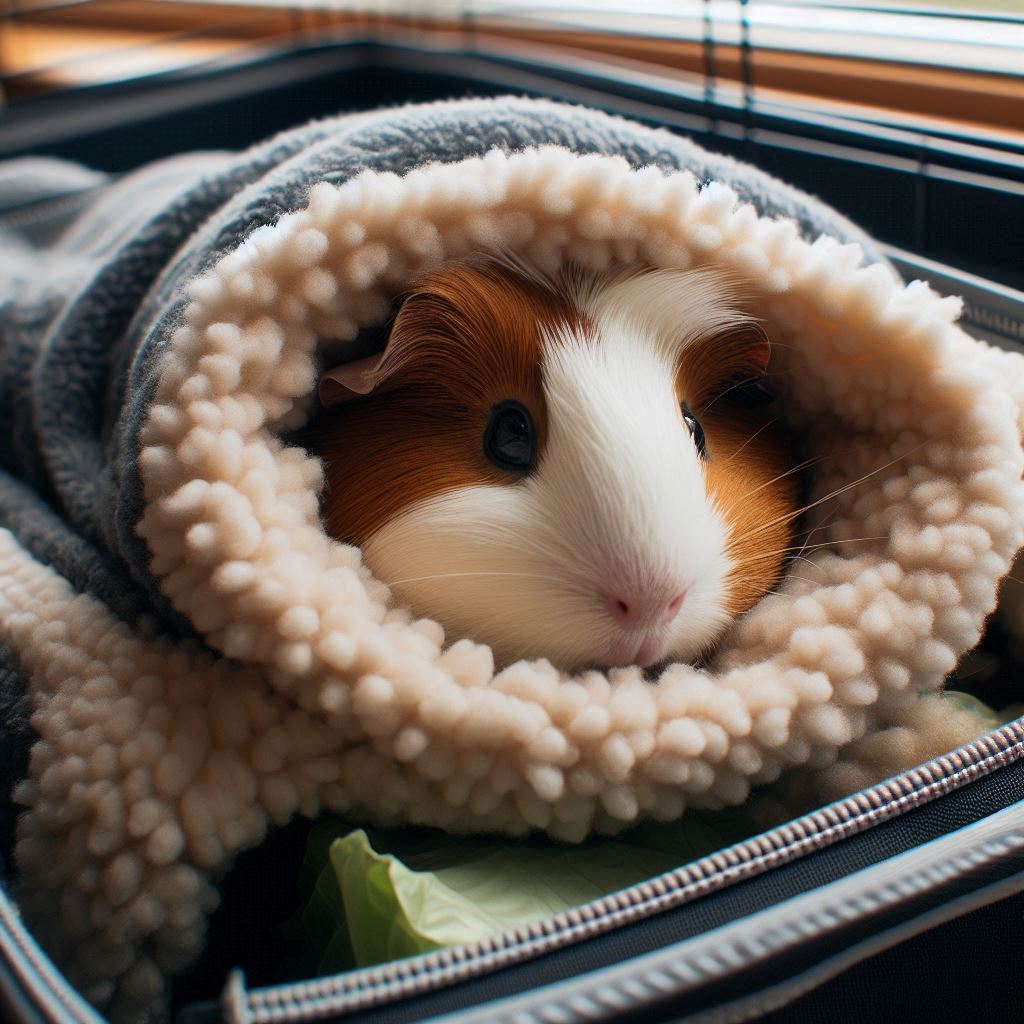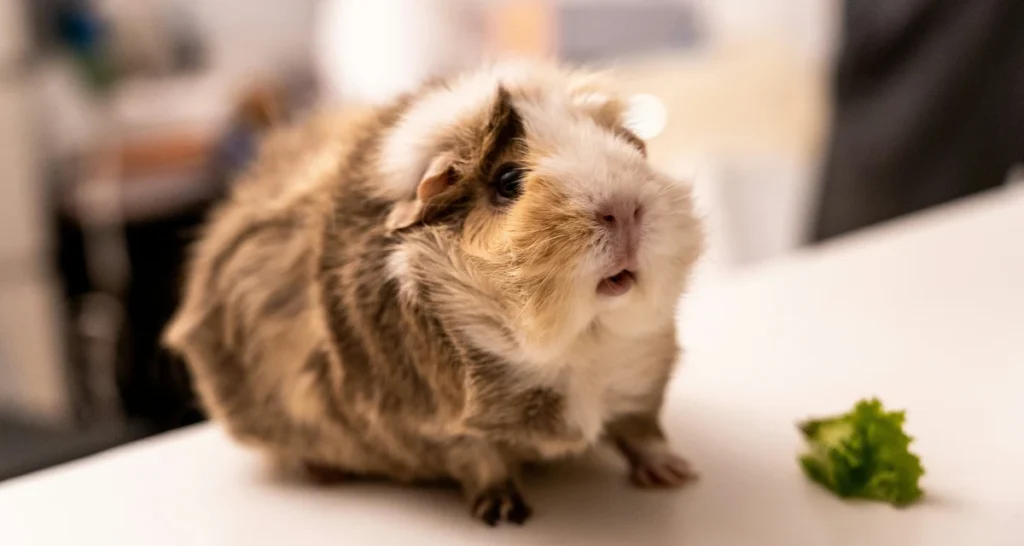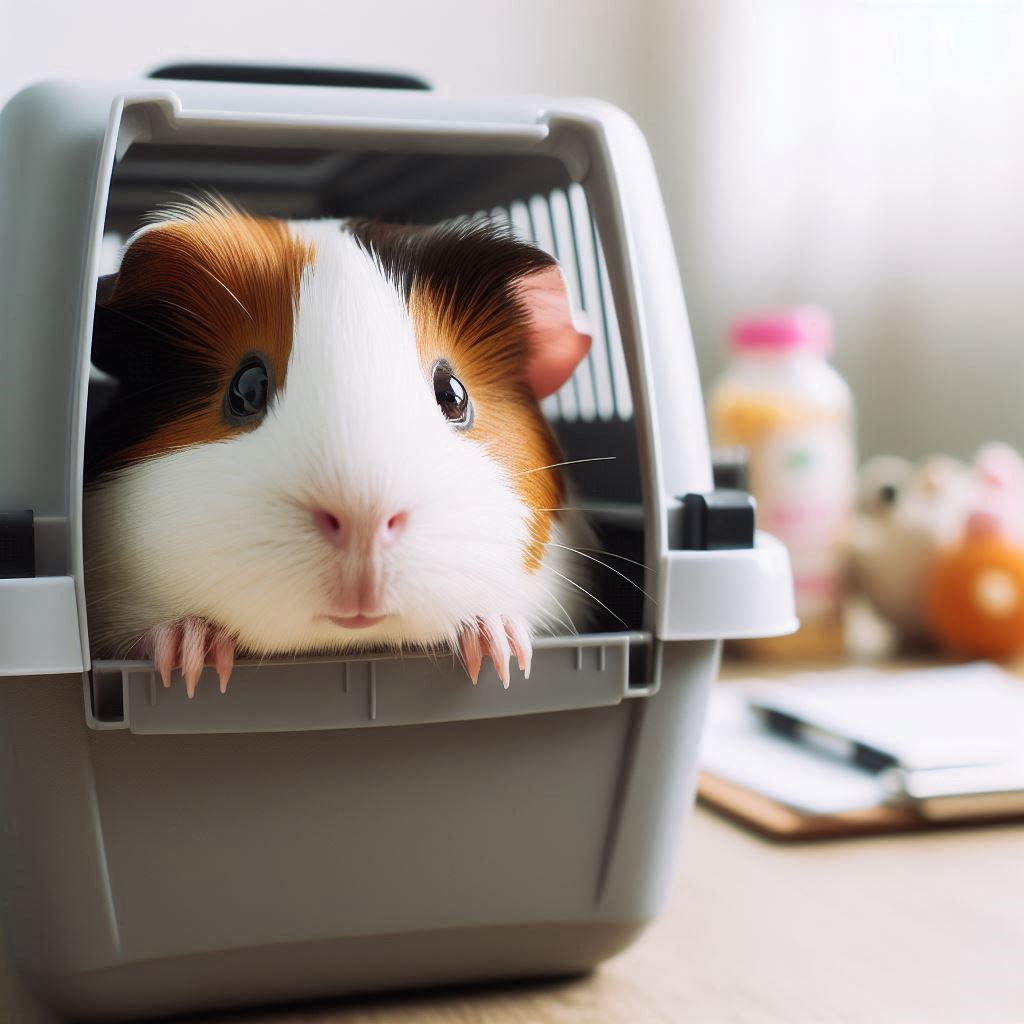The bond between humans and their pets transcends the boundaries of everyday life, extending to shared experiences and adventures. For guinea pig owners, this means exploring the possibility of traveling with their beloved furry companions. However, embarking on journeys with these delicate creatures requires careful planning and consideration to ensure their well-being throughout the trip. This comprehensive guide provides valuable insights and practical tips to make traveling with guinea pigs a smooth and enjoyable experience for both pet and owner.
Contents
- Understanding Your Guinea Pig’s Unique Travel Needs
- Selecting the Ideal Carrier: Creating a Home Away From Home
- Creating a Comfortable Carrier Environment: Enhancing Comfort and Well-Being
- Packing Essentials: A Guinea Pig Travel Checklist
- Traveling Safely and Comfortably: Reducing Stress and Ensuring Well-Being
- Destination-Specific Considerations: Planning for a Seamless Experience
- Sustainable Travel Practices: Eco-Friendly Options for Responsible Pet Owners
- Creating Unforgettable Adventures: Traveling with Your Guinea Pig
- FAQs About Traveling with guinea pigs
- Wrap-Up: Traveling with Guinea Pigs
Understanding Your Guinea Pig’s Unique Travel Needs
Before setting off on any adventure, it’s crucial to understand the unique needs of guinea pigs as travel companions. These adorable creatures are prey animals by nature, making them inherently sensitive to changes in their environment. Sudden movements, loud noises, and unfamiliar surroundings can trigger stress and anxiety in guinea pigs. Recognizing their vulnerability is the first step toward creating a safe and comfortable travel experience.
Each guinea pig possesses a distinct personality, and these individual traits play a significant role in how they adapt to travel. Some guinea pigs are naturally timid and may require ample hiding spaces and minimized visual stimulation during the journey. Others may exhibit a curious and adventurous spirit, finding comfort in a carrier with a small viewing window that allows them to observe their surroundings. By understanding your guinea pig’s temperament, you can tailor the travel arrangements to meet their specific needs, ensuring a more relaxed and enjoyable experience for them.
Acclimating your guinea pig to their carrier well in advance of the trip is essential. Begin by introducing the carrier as a positive and safe space within their familiar environment. Place treats and favorite toys inside the carrier, encouraging them to explore it at their own pace. Gradual and positive reinforcement will help your guinea pig associate the carrier with pleasant experiences, making them more comfortable during actual travel.
Selecting the Ideal Carrier: Creating a Home Away From Home
Choosing the suitable carrier is paramount to ensuring your guinea pig’s safety and well-being during travel. A sturdy carrier constructed from hard plastic or metal provides the best protection against potential hazards during the journey. Avoid carriers made from flimsy materials or those with mesh sides, as these can easily collapse or be compromised if other items in the vehicle shift during transit.
The size of the carrier is equally essential. Opt for a carrier that meets the minimum size requirements for the number of guinea pigs traveling together. Each guinea pig should have ample space to move around comfortably, lie down, and turn around without feeling cramped. Overcrowding can lead to stress, overheating, and even injuries.
DIY carrier options, such as modified storage bins, present a cost-effective and practical solution, especially for owners traveling with multiple guinea pigs. These bins offer ample space and can be easily stacked for efficient transport. However, ensure that any modifications made to the bin, such as adding ventilation holes, are done safely and securely, using materials like hardware cloth to prevent chewing or escape.
Adequate ventilation within the carrier is crucial to your guinea pig’s health. Insufficient airflow can lead to overheating, respiratory distress, and even suffocation. Select a carrier with multiple ventilation points strategically placed to promote air circulation. When using a DIY carrier, ensure that the ventilation holes are large enough to provide sufficient airflow but small enough to prevent escape or injury.

Creating a Comfortable Carrier Environment: Enhancing Comfort and Well-Being
Beyond the basic requirements of safety and ventilation, creating a comfortable and enriching environment within the carrier can significantly reduce stress and promote your guinea pig’s well-being during travel.
Choose bedding materials that are absorbent, comfortable, and safe for guinea pigs. Paper bedding, aspen shavings, or fleece liners are all suitable options. Avoid using cedar or pine shavings, as these woods contain aromatic oils that can be harmful to guinea pigs’ respiratory systems.
Consider incorporating sensory enrichment elements within the carrier to enhance your guinea pig’s comfort further and reduce anxiety. Aromatherapy, using calming scents like lavender or chamomile, can promote relaxation. However, consult with a veterinarian about safe aromatherapy practices for guinea pigs before using any essential oils. Auditory stimulation, such as playing soft music or nature sounds, can also help create a soothing atmosphere within the carrier.
Packing Essentials: A Guinea Pig Travel Checklist
Packing for a trip with guinea pigs requires careful consideration to ensure you have everything needed to meet their basic needs and address any potential situations that may arise during the journey. Here is a comprehensive checklist:
- Food and Water: Pack enough guinea pig pellets, hay, and fresh vegetables for the entire trip, accounting for potential delays or unexpected circumstances.
- Hay is Essential: Hay is a guinea pig’s primary food source and should be readily available throughout the journey. Consider using a hay rack or stuffing hay inside a toilet paper tube to keep it clean and accessible within the carrier.
- Fresh Veggies for Hydration: Fresh vegetables, especially those with high water content, such as cucumbers, romaine lettuce, and bell peppers, can help keep guinea pigs hydrated, especially in warmer weather.
- Cleaning Supplies: Pack essential cleaning supplies, such as a dustpan, small trash bags, and pet-safe cleaning wipes, to maintain hygiene within the carrier and at your destination.
- First Aid Kit: A guinea pig-specific first aid kit is crucial for addressing any minor injuries or health concerns that may occur during the trip. Include items like a syringe, styptic powder to stop bleeding from nail trims, and a list of emergency contact information for a veterinarian at your destination.
Traveling Safely and Comfortably: Reducing Stress and Ensuring Well-Being
Once you’ve packed your essentials, it’s time to focus on ensuring a safe and comfortable journey for your guinea pig. Begin by placing the carrier in a secure location within your vehicle where it won’t slide or tip over during travel. The back seat, secured with a seatbelt or placed on the floor behind the front passenger seat, is often the safest option.
Temperature regulation within the vehicle is crucial for your guinea pig’s health. In hot weather, take steps to prevent overheating, such as using a frozen water bottle (wrapped in a sock or towel) to create a calm zone within the carrier, running the air conditioner, and keeping the carrier out of direct sunlight. In cold weather, use a heating pad or hot water bottle (ensuring safe placement and monitoring to prevent burns) to maintain a comfortable temperature within the carrier. Run the car heater to keep the overall vehicle temperature warm.
Minimize stress during travel by driving smoothly, avoiding sudden movements, and speaking to your guinea pig in a calming voice. If possible, travel during more excellent times of the day to avoid extreme temperatures. For longer journeys, make stops to offer fresh food and water, allow for gentle handling and interaction, and provide brief periods of supervised exercise in a safe, enclosed area, such as a travel pen.

Destination-Specific Considerations: Planning for a Seamless Experience
Planning for your guinea pig’s needs at your destination is just as crucial as planning for the journey itself. Thoroughly research pet policies for all aspects of your travel itinerary, including transportation, accommodations, restaurants, and attractions. When booking accommodations, inquire about their pet policies to ensure guinea pig-friendly environments.
Be aware of climate and environmental hazards that may pose a risk to your guinea pig’s health at your destination. Factors such as altitude sickness, extreme humidity, or the presence of regional pests or predators should be considered.
Before traveling, research and locate exotic animal veterinarians at your destination. Keep their contact information readily available in case of any health concerns. Having a veterinarian identified in advance can provide peace of mind and ensure prompt access to medical care if needed.
Sustainable Travel Practices: Eco-Friendly Options for Responsible Pet Owners
For environmentally-conscious pet owners, incorporating sustainable practices into your travel plans is a meaningful way to reduce your ecological footprint while ensuring your guinea pig’s well-being. Consider using a carrier made from recycled plastic or sustainable fabrics. These eco-friendly options minimize environmental impact without compromising on quality or safety.
Reduce waste generated during the trip by using reusable food containers, biodegradable bedding options, and carrying a reusable water bottle for your guinea pig. By making conscious choices, you can enjoy a memorable journey with your furry companion while minimizing your impact on the planet.

Creating Unforgettable Adventures: Traveling with Your Guinea Pig
Traveling with guinea pigs can be a rewarding experience, allowing you to share new adventures and create lasting memories with your furry companion. By understanding their needs, planning carefully, and prioritizing their well-being throughout the journey, you can ensure a safe, comfortable, and enjoyable travel experience for both you and your beloved guinea pig. Embrace the opportunity to explore the world together, creating unforgettable memories that will strengthen your bond for years to come.
FAQs About Traveling with guinea pigs
What kind of carrier should I use?
It would be best if you used a sturdy carrier that is made of hard plastic or metal. The carrier should be large enough for your guinea pig to move around in but small enough to prevent them from being thrown around. Make sure the carrier has proper ventilation. Do not use a cardboard box, small cage, open-top tub, or laundry basket.
What should I put in the carrier?
Line the carrier with paper bedding, Aspen, a hand/dish towel, a puppy pad, or a fleece pad. You can also include a serving of vegetables and a small amount of hay. Do not put objects such as blankets, tunnels, cuddle sacks, or igloos in the carrier, as they can block ventilation.
Should I put a water bottle in the carrier?
No. Water bottles tend to leak, mainly when the carrier is being transported.
How can I keep my guinea pig cool in hot weather?
Guinea pigs do not sweat, so they are susceptible to heatstroke. To keep your guinea pig cool in hot weather, bring water-rich vegetables, freeze a plastic water bottle filled with water, place it in a sock or towel inside the carrier, and run the A/C in the car. Avoid putting the carrier in direct sunlight.
How can I keep my guinea pig warm in cold weather?
To keep your guinea pig warm in cold weather, run the heater in your car, cover the carrier with a blanket when walking from your home to the car, and be prepared if your car breaks down. You can also use a heating pad or hot water bottle under the cage if you are concerned about the temperature.
Wrap-Up: Traveling with Guinea Pigs
Here are some key takeaways from the sources about traveling with guinea pigs, along with some additional tips.
- Guinea pigs are not natural travelers. Traveling can be stressful for guinea pigs, so it’s essential to take steps to minimize their stress.
- A sturdy carrier is essential. The carrier should be made of a rigid material that won’t collapse if something falls on it. It should also be large enough for your guinea pig to move around in but small enough to prevent them from being thrown around.
- Don’t overpack the carrier. The only things that should go in the carrier are your Guinea pig, some bedding, a serving of vegetables, and a small amount of hay. Avoid putting objects such as blankets, tunnels, cuddle sacks, or igloos in the carrier, as they can block ventilation.
- Don’t put a water bottle in the carrier. Water bottles tend to leak, mainly when the carrier is being transported.
- Take steps to keep your guinea pigs cool in hot weather and warm in cold weather. You can freeze a water bottle and put it in a sock in the carrier to keep it cool, and you can use a heating pad or hot water bottle to keep it warm. Make sure to monitor the temperature in the carrier and adjust accordingly.
- Give your guinea pigs plenty of fresh vegetables to keep them hydrated.
- If you are going on a long trip, you will need to bring a cage for your guinea pigs to stay in when you are not traveling. You can use a Midwest guinea pig cage, which folds up for easy transport. You should also bring a playpen so your guinea pigs can have some time to exercise.
- Be prepared for emergencies. Make sure you have a plan for what to do if your car breaks down or if there is another emergency.
- Consider using a carrier designed for multiple guinea pigs if you have more than one. This can be more efficient and make it easier to transport your guinea pigs.
By following these tips, you can help make traveling with your guinea pig a safe and enjoyable experience for both of you.


